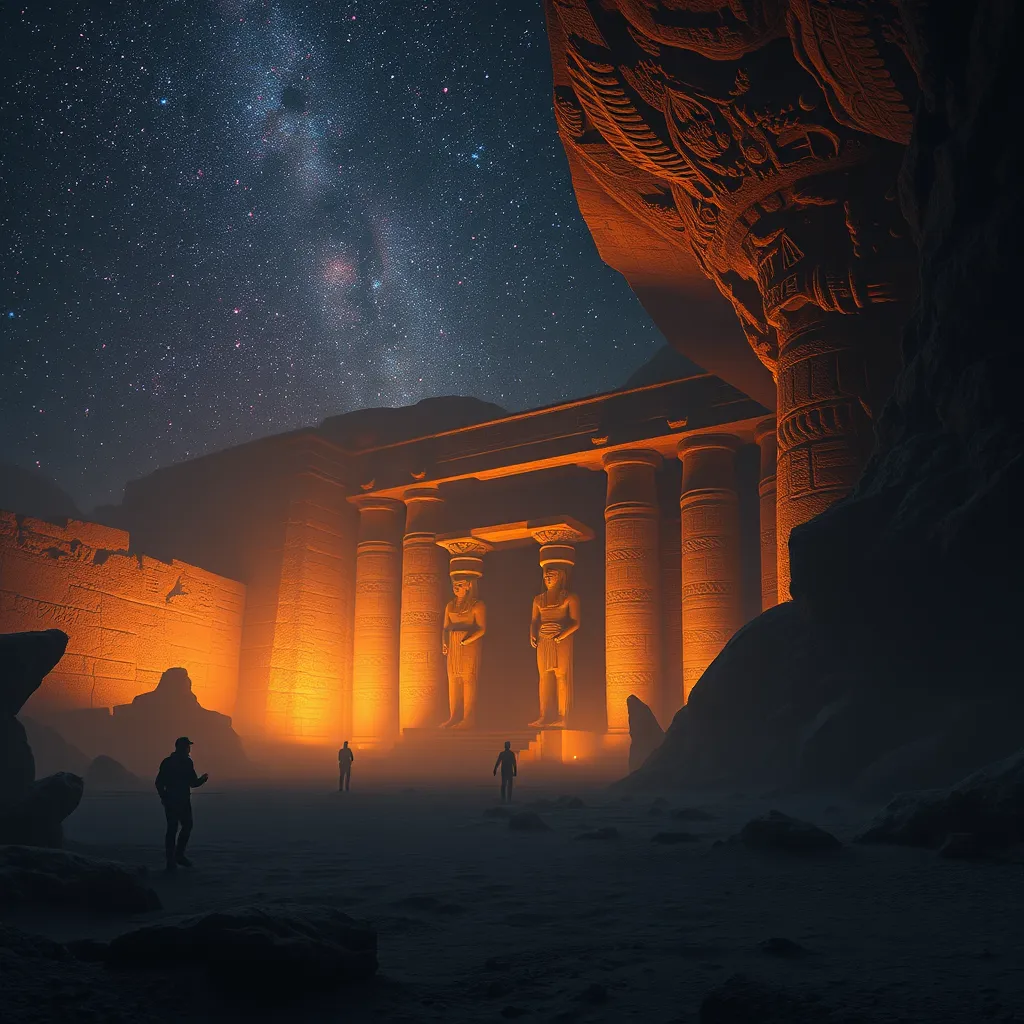The Duat: A Journey Through the Shadows of Time
I. Introduction to the Duat
The Duat, a term rooted in ancient Egyptian belief, signifies more than just an afterlife realm; it embodies the complex tapestry of existence beyond death. In the ancient Egyptian cosmology, the Duat represents the underworld, where souls traverse after their earthly life. Its significance is profound, as it encapsulates the journey of the soul, the trials it faces, and the ultimate judgment it must endure.
In mythology, the Duat serves as a backdrop for various narratives involving gods, the deceased, and the intricate workings of the afterlife. This mystical realm is a place of both danger and enlightenment, where the deceased seek to attain eternal life through their actions and beliefs during their mortal existence.
II. Historical Context of the Duat
The concept of the Duat has its origins in ancient Egyptian texts, dating back to the Old Kingdom. Early references can be found in pyramid texts, which served as guides for the pharaohs navigating the afterlife. These texts laid the groundwork for the understanding of the Duat, portraying it as a complex realm filled with obstacles and divine beings.
As Egyptian society evolved through different dynasties, so too did the depiction and understanding of the Duat. The Middle Kingdom saw a shift towards more elaborate descriptions, emphasizing the Duat’s connection with the sun god Ra and the cycle of life and death. By the New Kingdom, the Duat was fully embraced in funerary practices, with intricate rituals designed to aid the deceased on their journey.
III. Geography of the Duat
The Duat is not a singular location but a collection of realms, each with its unique characteristics. Some of the known regions within the Duat include:
- The Field of Reeds: A paradise-like area where the souls of the righteous reside, resembling the Nile’s lush banks.
- The Hall of Two Truths: The site of judgment where souls face their deeds and are weighed against the feather of Ma’at.
- Darkness and Chaos: Regions filled with monsters and pitfalls, representing the challenges that souls must overcome.
The landscape of the Duat symbolizes the duality of life and death, light and darkness. The inhabitants of this realm include various deities, mythical creatures, and the souls of the deceased, all contributing to the rich mythology surrounding the afterlife.
IV. Deities and Guardians of the Duat
Key figures in the Duat play crucial roles in guiding souls and maintaining the balance between life and death. Notable deities include:
- Osiris: The god of the afterlife, resurrection, and fertility, Osiris presides over the judgment of souls.
- Anubis: The god of mummification and the protector of graves, Anubis guides souls through the Duat and oversees the weighing of the heart.
- Thoth: The god of wisdom and writing, Thoth records the results of the judgment and ensures the proper order of the Duat.
These deities embody various aspects of the afterlife, providing both challenges and guidance to the souls navigating through the Duat.
V. The Journey of the Soul
The journey through the Duat is fraught with trials that the deceased must face to attain eternal life. The steps involved in this passage include:
- Entering the Duat: Upon death, the soul begins its journey, often depicted as a boat ride through the waters of the Duat.
- Facing Challenges: Souls encounter various obstacles, including serpents, demons, and illusions that test their worthiness.
- Reaching the Hall of Two Truths: The soul arrives at this pivotal location for judgment.
These challenges are not merely physical; they also represent moral and ethical dilemmas that reflect the deceased’s life choices.
VI. The Weighing of the Heart
One of the most significant events in the Duat is the weighing of the heart, a judgment process that determines the fate of the soul. The heart, believed to contain the essence of one’s being, is weighed against the feather of Ma’at, the goddess of truth and justice.
If the heart is lighter than the feather, the soul is deemed worthy and is granted passage to the Field of Reeds. However, if the heart is heavier, it is devoured by Ammit, a fearsome creature that represents unworthiness. This judgment is crucial, as it underscores the importance of morality and virtue in ancient Egyptian spirituality.
VII. Artistic Representations of the Duat
The Duat has been depicted in various forms of art, notably in tomb paintings and artifacts. These artistic representations serve as both a guide and a depiction of the afterlife journey. Common themes in these artworks include:
- Scenes of the deceased interacting with gods.
- Imagery of the weighing of the heart.
- Vivid landscapes of the Duat, illustrating its diverse regions.
These artistic expressions have significantly impacted modern interpretations of the afterlife, providing insights into the beliefs and practices of ancient Egyptians.
VIII. Legacy and Influence of the Duat
The Duat’s influence extends beyond ancient Egypt, impacting later cultures and religions. Its themes of judgment, afterlife, and morality resonate in various mythologies and spiritual practices worldwide. The concept of an afterlife where souls are judged based on their earthly deeds can be seen in:
- Greek mythology, with its idea of Hades and the judgment of souls.
- Christian eschatology, which discusses heaven, hell, and the final judgment.
- Islamic beliefs in the afterlife, where deeds are weighed to determine one’s fate.
Today, discussions around the Duat continue to be relevant, as they encourage reflections on morality, the meaning of life, and what lies beyond death. The rich tapestry of the Duat remains a fascinating topic of study for scholars, historians, and spiritual seekers alike.




